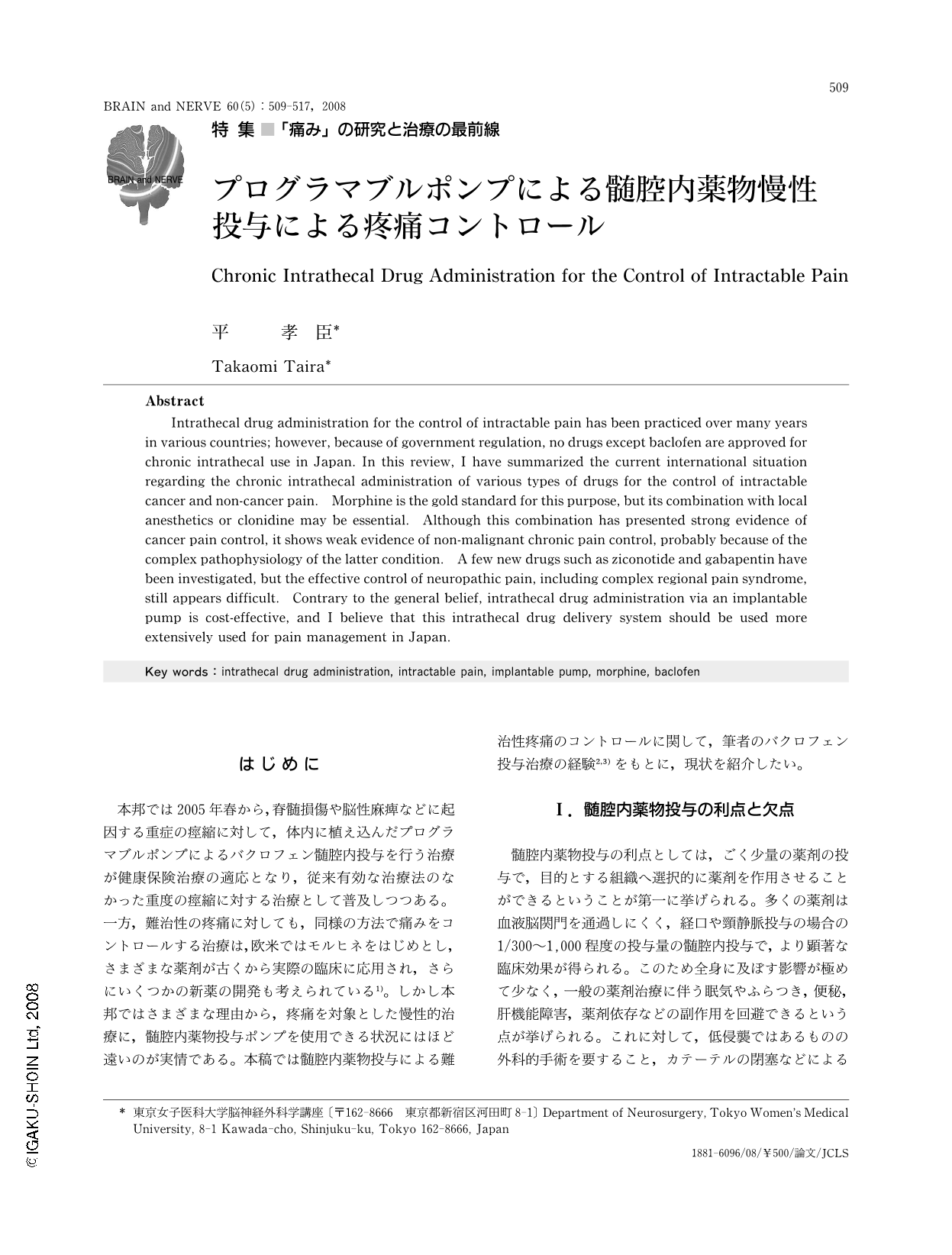Japanese
English
- 有料閲覧
- Abstract 文献概要
- 1ページ目 Look Inside
- 参考文献 Reference
はじめに
本邦では2005年春から,脊髄損傷や脳性麻痺などに起因する重症の痙縮に対して,体内に植え込んだプログラマブルポンプによるバクロフェン髄腔内投与を行う治療が健康保険治療の適応となり,従来有効な治療法のなかった重度の痙縮に対する治療として普及しつつある。一方,難治性の疼痛に対しても,同様の方法で痛みをコントロールする治療は,欧米ではモルヒネをはじめとし,さまざまな薬剤が古くから実際の臨床に応用され,さらにいくつかの新薬の開発も考えられている1)。しかし本邦ではさまざまな理由から,疼痛を対象とした慢性的治療に,髄腔内薬物投与ポンプを使用できる状況にはほど遠いのが実情である。本稿では髄腔内薬物投与による難治性疼痛のコントロールに関して,筆者のバクロフェン投与治療の経験2,3)をもとに,現状を紹介したい。
Abstract
Intrathecal drug administration for the control of intractable pain has been practiced over many years in various countries; however, because of government regulation, no drugs except baclofen are approved for chronic intrathecal use in Japan. In this review, I have summarized the current international situation regarding the chronic intrathecal administration of various types of drugs for the control of intractable cancer and non-cancer pain. Morphine is the gold standard for this purpose, but its combination with local anesthetics or clonidine may be essential. Although this combination has presented strong evidence of cancer pain control, it shows weak evidence of non-malignant chronic pain control, probably because of the complex pathophysiology of the latter condition. A few new drugs such as ziconotide and gabapentin have been investigated, but the effective control of neuropathic pain, including complex regional pain syndrome, still appears difficult. Contrary to the general belief, intrathecal drug administration via an implantable pump is cost-effective, and I believe that this intrathecal drug delivery system should be used more extensively used for pain management in Japan.

Copyright © 2008, Igaku-Shoin Ltd. All rights reserved.


